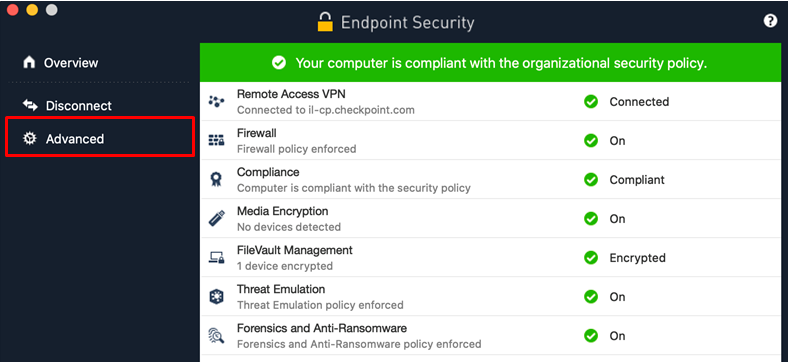

When end users access the SSL Network Extender for the first time, they are prompted to download an ActiveX component that scans the end user machine for Malware.
#Check point vpn plugin software
Endpoint Security on DemandĮndpoint Security on Demand (ESOD) may be used to scan endpoint computers for potentially harmful software before allowing them to access the internal application. Visitor mode is designed as a solution for firewalls and Proxy servers that are configured to block IPsec connectivity. It enables tunneling of allclient-to- Security Gateway communication through a regular TCP connection on port 443.

Visitor Mode is a Check Point remote access VPN solution feature.

The address may be taken either from a general IP address pool, or from an IP address pool specified per user group, using a configuration file. The assignment lease is renewed as long as the user is connected. The assignment takes place once the user connects and authenticates. This IP address is used only internally for secure encapsulated communication with the home network, and therefore is not visible in the public network. It enables a Security Gateway to assign a remote client an IP address. Office Mode is a Check Point remote access VPN solution feature. Remote Access CommunityĪ Remote Access Community, a Check Point concept, is a type of VPN community created specifically for users that usually work from remote locations, outside of the corporate LAN. The Security Gateway provides a Remote Access Serviceto the remote clients. Refers to remote users accessing the network with client software such as Endpoint VPN clients, SSL clients, or third party IPsec clients. It is strongly recommended that you review the "Remote Access VPN" section of this book before reading this guide. This section briefly describes commonly used concepts that you will encounter when dealing with the SSL Network Extender. Users download SSL Network Extender from a Security Gateway portal. To enable connectivity for clients using the SSL Network Extender, a Security Gateway must be configured to support Remote Access Clients, in addition to a minor configuration specific to SSL Network Extender. The SSL Network Extender is a thin client installed on the user's computer and an SSL enabled web server component, integrated into the Security Gateway. If you already had SSL Network Extender configured on an IPsec VPN Security Gateway and then you enable the Mobile Access Software Blade, you must reconfigure SSL Network Extender for the Mobile Access Software Blade. In this case, SSL Network Extender must be configured through the Mobile Access Software Blade. Note - If the Mobile Access Software Blade is active on a Security Gateway, SSL Network Extender works through Mobile Access and not IPsec VPN. It is much easier to deploy a new version of the SSL Network Extender client than it is to deploy a new version of other conventional clients. Once the end user has connected to a server, the thin client is downloaded as an ActiveX component, installed, and then used to connect to the corporate network using the SSL protocol. The SSL Network Extender requires a server side configuration only, unlike other remote access clients.
#Check point vpn plugin full
It is activated by using the SmartDashboard, thus enabling full secure IP connectivity over SSL. By default, the SSL enabled web server is disabled. (The SSL Network Extender client has a much smaller size than other clients.) It is connected to an SSL enabled web server that is part of the Enforcement Module. A thin client is installed on the user's machine. The SSL (Secure Socket Layer) Network Extender is a simple-to-implement remote access solution. To resolve these issues, a secure connectivity framework is needed to ensure that remote access to the corporate network is securely enabled. The given solution should be seamless for the connecting user. No configuration should be required as a result of network modification. Secure connectivity: Guaranteed by the combination of authentication, confidentiality and data integrity for every connection. The range of applications available must include web applications, mail, file shares, and other more specialized applications required to meet corporate needs. These requirements include:Ĭonnectivity: The remote client must be able to access the organization from various locations, even if behind a NATing device, Proxy or Firewall. Whenever users access the organization from remote locations, it is essential that not only the usual requirements of secure connectivity be met but also the special demands of remote clients. SSL Network Extender Introduction to the SSL Network Extender


 0 kommentar(er)
0 kommentar(er)
